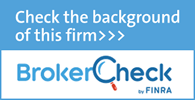Self Employed with a Solo 401(k) and Loving It – more for the “Yacht-less”
I like to walk my neighborhood and see the businesses that have stayed the course, popped-up and who has moved on with the times.

Introduction
I like to walk around my Brooklyn neighborhood. I notice the businesses that have stayed the course or have recently popped-up and those that have moved on with the times. Walking down Atlantic Avenue, Brooklyn, I see the cabinet maker’s workshop, then there is the fine art picture framer whose main clientele are museums, the new coffee and Wi-Fi spot, and the Urban Outfitters building still with its 1859 decal “Sale Makers - Canvas Goods”. Not to mention the many restaurants.
So, what do you think is on the mind of all these business owners? - no doubt they are thinking about how they can do things better, their cashflow, making payroll, growing sales, competition, taxes, regulations, and of course the landlord. How does choosing the ideal retirement vehicle get on their radar?
The Simplified Employee Pension plan - SEP IRA
A SEP IRA is a qualified retirement plan that is exclusively for the self-employed[1]. It’s easy to establish (usually free of charge) and can be set-up and contributions made post-tax filing year, i.e. you can set it up in 2019 and make contributions before April 15, 2019, that will be tax-deductible in your 2018 tax filing. The maximum employee and employer contributions for 2019 is - $56,000, and to reach this contribution limit you will need a total income of $270,000.
The Solo 401(k)
Like the SEP IRA a Solo 401(k) is also a qualified retirement plan that is exclusively for the self-employed and their spouse (it is not available to business owners with employees). It combines the benefits of an employer-sponsored 401(k) plan without all the administrative requirements. It’s easy to establish, however, unlike the SEP IRA it must be established during the tax filing year for which contributions are claimed as deductions, i.e. to claim a contribution deduction in 2019 the solo 401(k) must be established in that year, the cash contribution can be made in the following year.
Some investment platforms (e.g. TD Ameritrade, Vanguard) offer Solo 401(k) plans free of charge as long as you use their platform to invest. In a Solo 401(k) the business owner is both the employee and the employer for the purposes of the plans. The maximum employee contributions for 2018 is - $18,500 (if under age 50), and $24,500 (if over 50 years of age). In addition to the employee contribution the employer contribution can increase the total contribution for the year to a maximum of $55,000 (if under age 50), and to $61,000 (if over 50 years of age), i.e. the employee and employer contribution together cannot exceed these amounts. Also, the employee contributions can be an after-tax Roth contribution, however, the employer contributions must be pre-tax. Employer contributions are limited to 20% of profits for a sole proprietorship or partnerships, and 25% for S and C Corporations. Another benefit of the solo 401(k) is that you are allowed to take a loan from your plan, but this is not allowed if you have a SEP-IRA plan. The maximum loan is 50% of plan value or $50,000, whichever is the lowest (e.g. If plan assets are $80,000 the maximum loan is $40,000, if plan assets are $100,000 or more the maximum loan is $50,000. This loan facility can provide valuable, low cost, working capital to a business owner.
How does a Solo 401(k) compare to a SEP IRA?
Let us an example and assume we are a sole proprietor that is age 55 with $195,000 net business income for the 2018 year. Our SEP IRA maximum contribution would be $36,885, compared to a Solo 401(k) Maximum Contribution of $61,000, that’s a difference of $24,115. So, in this example, we can contribute $24,500 to our solo employee account as a Roth and the balance of $36,500 ($61,000 less $24,500) can be a pre-tax employer contribution. Also, it is important to note is that a Backdoor[2] Roth IRAs is allowed with Solo 401(k), but not with a SEP-IRA, and leveraged real estate Investments are allowable with a solo 401(k), but not a SEP-IRA. (Caveat - This will require a custom 401(k) plan documents (not available free of charge) and there are complex rules involving IRS “prohibited transactions”, violations may result in severe tax penalties. Be sure to consult an attorney and a CPA before considering this option.)
Focus on what you can control.
A Solo 401(k) has all the benefits and more of a SEP IRA, and the owner reaches their contribution limit with far less income. The choice of a retirement vehicle for retirement savings needs to recognize each persons’ unique set of circumstances. When you have to determine your ideal retirement vehicle your investment strategy needs to ensure that your:
- financial plan fits your needs and risk tolerance and is able to respond to changes in circumstances.
- investment portfolio is well diversified.
- Investment expenses and taxes are known and managed.
- Investment strategy will keep you disciplined through market swings and dips.
Retirement planning is an important topic for all of us, and where expert financial advice can add a lot of value. I hope you found this blog helpful and that it steers you to the best option for your needs. If you have any questions, please let me know at This email address is being protected from spambots. You need JavaScript enabled to view it..
[1] If you have employees, you can set up a profit-sharing plan for the employees.
[2] A backdoor Roth IRA is the conversion of a Traditional IRA to a Roth IRA ideally in low-income years.



